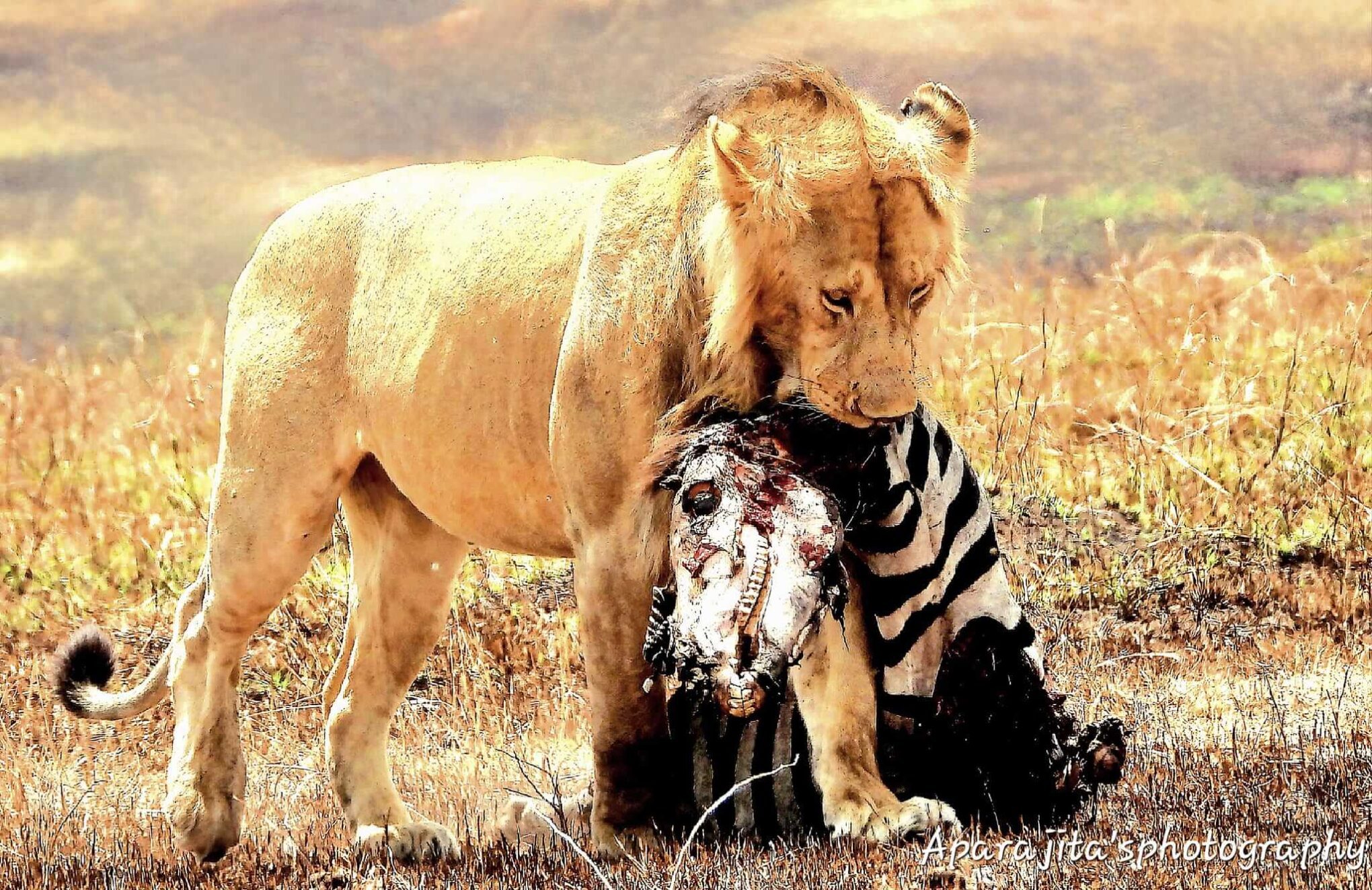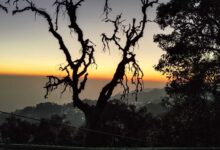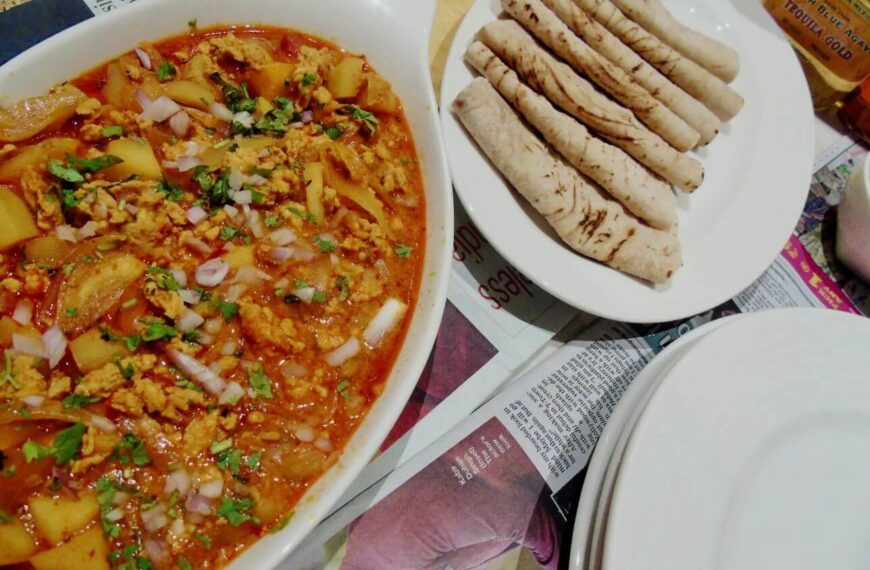A tapestry of sun-soaked savagery unfolds as a lion’s meal becomes a stage for nature’s macabre performance. Prof. Aparajita explores Masai Mara’s intricate dance of survival, exclusively for Different Truths.

It was a pleasant morning in late August. We had been there in Masai Mara for a couple of days now. We set out from our safari camp early in the morning and were cruising around. There were zebras and topis in copious numbers, peacefully picking at the shrubbery of the vast plains of the Savannah.
While on our journey, Dennis, our guide who also served as our driver, received a message on the walkie-talkie, connecting him with fellow guides. The message informed us about a recent kill nearby. We turned our car and sped towards where the kill had been reported. As we approached the spot, we found several other safari vehicles already parked in a semi-circle. We were aware that the vehicles had to skirt the kill in front. When we went around and found a spot for ourselves, what we saw was a breathtaking scene.
There was this enormous adult lion with a half-eaten kill…carefully tearing the flesh off the skeletal carcass.
There was this enormous adult lion with a half-eaten kill—from where we were, it looked like a dead zebra—carefully tearing the flesh off the skeletal carcass. He was intent on its attention towards his food, taking time to grip the lifeless limbs firmly between his saber teeth before pulling it apart from the body. In between the bites, he would take a few moments to lick his food with relish.
Difficult as it was to tear our eyes from the king at his meal, our eyes did stray a few yards away, where there was a growing congregation of assorted creatures gathering nearby. Keeping a safe distance from the site of the royal meal but hovering expectantly around and keeping a sharp lookout for a chance to close in, were a few hyenas. We noticed around three female hyenas loping about, intent looks in their alert eyes and on their otherwise rather comical faces. They kept slinking around, waiting for the king to finish, so that they could close in and tear at the flesh left over after the king had eaten. To their delight, a few minutes later, the lion, having had his fill, heaved himself up heavily and slowly walked away.
It would probably head to a waterhole for a good, long drink of water and then have a delicious siesta underneath some acacia, shading it lightly from the sweet sunlight of the Mara. The hyenas closed in, laughing their comical staccato laughter, to tear off big chunks of meat from the kill. Once they had their share in their mouths, they sprinted away across the Mara before they disappeared into the horizon. One would think they were probably taking food back to waiting mouths back at home.
Anyway, once the hyenas were gone, it was the turn of the congregation of jackals.
Anyway, once the hyenas were gone, it was the turn of the congregation of jackals. As we watched how howling and barking in their excitement to get to the kill first, they pounced on the remains of the carcass hungrily, we noticed another layer of waiters—the vultures. Now that the waiting line of jackals had advanced to the kill, tugging, and pulling at what was left of the skeletal remains, the vultures started closing in, hopping, and shifting hopefully in the expectation of picking the bones clean of any flesh, tissues, and sinews that would be left over.
As our vehicle began to pull away from the scene, I took one last look at the carefully orchestrated drama that was still playing out there in all fury, as it must have played out for ages there in the Masai Mara—the drama of life—the drama of death—the drama of survival.
Photo by the author





 By
By

 By
By
Another gripping and thought-provoking story!